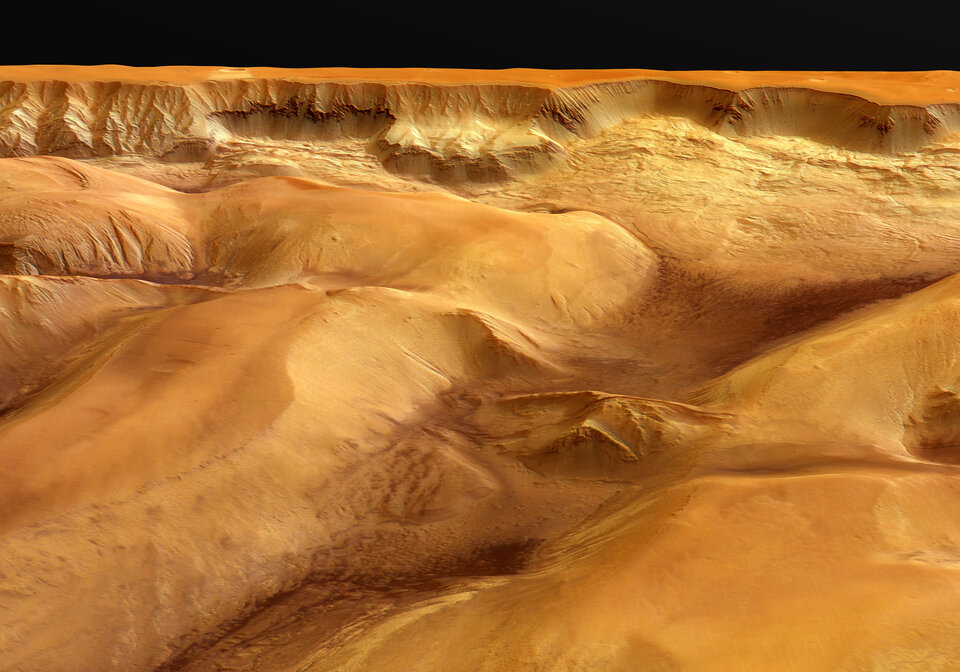Ophir Chasma, part of Valles Marineris
These images, taken by the High Resolution Stereo Camera (HRSC) on board ESA’s Mars Express spacecraft, show the Ophir Chasma, a northern part of the Valles Marineris canyon.
The images were taken during orbit 334 in April 2004 with a ground resolution of approximately 36 metres per pixel. The displayed region is located at about longitude 288° East and latitude 4° South.
Although the region has been mapped in detail during several missions, many secrets of the geological history of Valles Marineris still remain a mystery.

Valles Marineris is a huge canyon system around 4000 kilometres long, up to 240 kilometres wide and up to 6.5 kilometres deep.
Its connected ‘chasma’ or valleys may have formed from a combination of erosion and tectonic activity. The floor of the canyon shows morphological evidence of volcanic, fluvial or even glacial activity.

The northern scarp of Ophir Chasma, towards the left in these images, has an elevation of up to 5000 metres. Several slopes of collapsed material, indicating slope instabilities, can be seen at the base of the scarp and can be traced southwards along the valley floor for more than 70 kilometres.
In the south, east of the rounded and apparently smooth Baetis Mensa ridge, the dark chaotic terrain of Candor Chaos can be seen. This terrain is characterised by polygonal blocks that suggest material movements in north-south and east-west directions. Chaotic terrain on Mars is often connected to outflow channels, indicating the catastrophic release of large subsurface water reservoirs, and the subsequent collapse of tye above-lying rock.

With the help of HRSC stereo and colour data, it is possible to map distinct geological features in more detail in order to reconstruct the history of a region.
The colour images have been processed using the nadir and colour channels, and the perspective views have been calculated from the digital terrain model derived from the stereo channels. The anaglyph image has been created from the nadir and one stereo channel.

Image resolution has been decreased for use on the internet.
For more information on Mars Express HRSC images, you might like to read our updated 'Frequently Asked Questions'.















 Germany
Germany
 Austria
Austria
 Belgium
Belgium
 Denmark
Denmark
 Spain
Spain
 Estonia
Estonia
 Finland
Finland
 France
France
 Greece
Greece
 Hungary
Hungary
 Ireland
Ireland
 Italy
Italy
 Luxembourg
Luxembourg
 Norway
Norway
 The Netherlands
The Netherlands
 Poland
Poland
 Portugal
Portugal
 Czechia
Czechia
 Romania
Romania
 United Kingdom
United Kingdom
 Slovenia
Slovenia
 Sweden
Sweden
 Switzerland
Switzerland















































